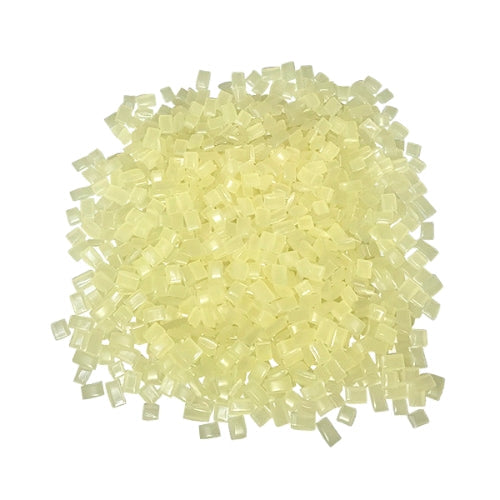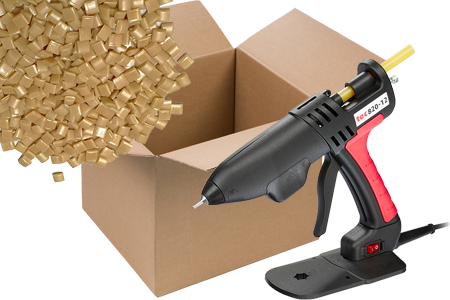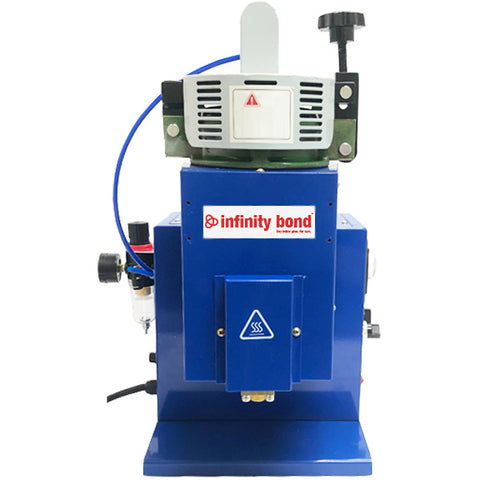Updated: March 5, 2025
Jump to:
- What Are Biodegradable Adhesives?
- Traditional Hot Melt vs. Biodegradable Hot Melt
- Difference Between Biodegradable and Compostable Adhesives
- Is Glue Biodegradable?
- The World's 1st Biodegradable Hot Melts
- Product Recommendations
- Frequently Asked Questions
Sustainability has become a growing priority in various industries, from manufacturing to packaging. As a result, there has been a shift toward finding more environmentally friendly alternatives to traditional materials that can negatively impact the environment. One such innovation is biodegradable adhesives. These products are meant to keep up with client demands while reducing unnecessary environmental harm.
What Are Biodegradable Adhesives?
Biodegradable adhesives are adhesives that can decompose or break down naturally over time without leaving behind any harmful residue. Unlike traditional adhesives that are often petroleum-based, they are often made of natural or renewable materials.
Some benefits of biodegradable adhesives include:
-
Reducing Plastic Waste: Traditional adhesives are petroleum-based and can leave behind large amounts of harmful microplastics that can remain in landfills for many years. On the other hand, biodegradable adhesives are designed to break down and minimize the amount of microplastics left behind.
-
Being Non-Toxic: Biodegradable glues are non-toxic and free of hazardous substances. As a result, they are much safer than traditional adhesives to handle.
-
Improving Recyclability: Traditional adhesives in cardboard recycling may be problematic, but biodegradable adhesives can allow for easier recycling and composting without harmful residue being left behind.
-
Complying with Regulations: As environmental concerns grow, many governments are putting strict regulations in place regarding plastic waste and recyclability. Biodegradable adhesive glues can help companies stay compliant with these requirements.
Traditional Hot Melt Vs. Biodegradable Hot Melt
Traditional Hot Melts
Traditional hot melt adhesives are polymer-based and solid at room temperature. They are applied in a molten state and harden as they lose heat. There are several different types of hot melt adhesives. Two of the most popular include ethylene-vinyl acetate (EVA) and polyolefin.
- Ethylene-vinyl acetate (EVA) adhesives - This form works well with paper and cellulosic materials and has a wide range of formulation. They set quickly, offer strong resistance properties, and operate in a moderate range of temperatures. They are used in the packaging, converting, paper, automotive, and assembly industries.
- Polyolefin adhesives- These adhesives are made with a catalyzed metallocene base. They have an even faster set speed and service a vast range of temperatures. They are also used in the packaging converting and assembly industries but are limited in their range of available formulations.
These traditional hot melts are petroleum-based and will leave behind toxic materials as they slowly break down, so they are not considered to be environmentally friendly or compostable adhesives.
Biodegradable
On the other hand, there are now biodegradable hot melts that have the same properties as traditional hot melts, but they are partially bio-based and made from materials derived from renewable resources.
These adhesives have been tested under ASTM conditions and are certified biodegradable to those standards. When exposed to oxygen, UV light, and heat, they will naturally break down and will be consumed by microorganisms. Unlike traditional hot melts, these biodegradable adhesives will not leave behind any harmful by-products and also break down at a much faster rate than traditional hot melts.
For companies looking for a more environmentally friendly adhesive option, these products are an eco-conscious adhesive solution compared to traditional hot melts.
What is the difference between biodegradable and compostable adhesives?
While all compostable products are also technically biodegradable, not all biodegradable products are compostable. The primary differences between something that is compostable and biodegradable are the amount of time it takes for the product to break down and the end results.
Compostable products are usually made of organic materials and can break down into natural elements in a compost facility within a certain amount of time. On the other hand, biodegradable products will still break down, but they may sometimes leave behind waste and often take a longer time to do so.
Some glue will break down when placed in a landfill given an extended amount of time. Obviously, we don't want products that last forever sitting in our landfills, so it is important to take note of how long it takes for the product to break down completely. Some products degrade in a few weeks, while others take years. When trying to be more eco-friendly, the less time for biodegradation, the better.
A compostable adhesive needs to undergo certain testing in order to be certified "compostable." They generally also have to be placed in the right kind of conditions, like those found in an industrial composting facility, in order to break down at the accelerated rate. Compostable adhesives would take longer to break down in a landfill, especially an "air-locked" landfill where there is no oxygen.
Is Glue Biodegradable? Is it Compostable?
Whether or not a glue is biodegradable or compostable will depend on the glue. Many adhesives are not compostable or biodegradable in that they leave behind toxic chemicals when they break down or take too long to decompose. That being said, there are some biodegradable glues on the market. In particular, there has recently been a launch of biodegradable hot melts that meet certain biodegradable and industrial composting standards.
The World's 1st Biodegradable Hot Melts
Traditionally, environmentally friendly glues have not really been a thing, but there have been some recent breakthroughs in this area. Now there are glues that have undergone extensive testing and meet ASTM D6400 standards for adhesives.
These glues are bio-based and biodegradable, so they break down without leaving any harmful by-products like microplastics behind. They bond well to cardboard and paper substrates, so they make great biodegradable hot glues for packaging applications, including end-of-line uses. These are the first biodegradable glues of their kind, and they come in various forms for companies looking to be more environmentally conscious.
Product Recommendations
1. Bulk Option for Automated Applications
With a speedy 10-second open time, the Tecbond 110B biodegradable bulk hot glue is made primarily for high-speed case sealing and carton closing. It can be applied at lower temperatures to reduce energy use while enhancing productivity.
2. Bulk Option for Manual Applications
These biodegradable hot glue pellets come in a 44-pound carton for companies using a lot of hot melt. The adhesive has a high viscosity and is often used for manual packaging applications. It should be stored away from direct sunlight in temperatures below 30°C.
3. Glue Sticks
We offer both ½" biodegradable glue sticks for low adhesive outputs and ⅝" biodegradable hot melt glue sticks for high adhesive outputs. The ½" sticks are great for more precise applications and smaller packaging needs. In contrast, the ⅝" sticks are better for use with heavier substrates or larger materials.
4. Slugs
Compared to traditional hot melt, these more environmentally conscious glue slugs are made for high-volume, industrial packaging applications. They come in 1¾ inch (or 43 mm) pale amber slugs in a 22-pound case.
Looking for a more environmentally friendly glue solution for your company? If you are not sure which product to use or just want to learn more about compostable and biodegradable adhesive glues as a whole, we want to help. Reach out to us today to speak with an adhesive expert.
Interested in distributing these products? We are also looking for new distribution partners for the biodegradable hot melts mentioned above. Learn more.















